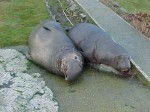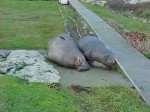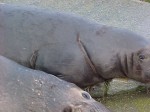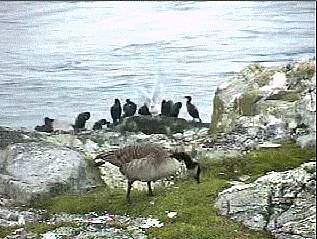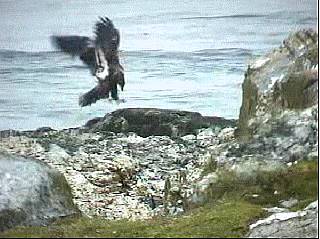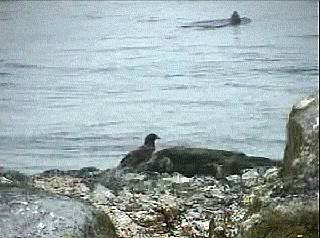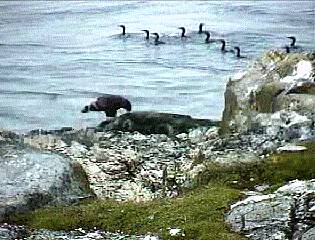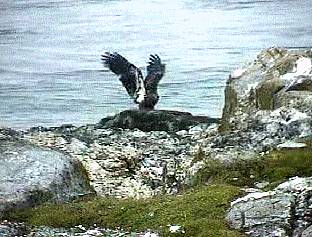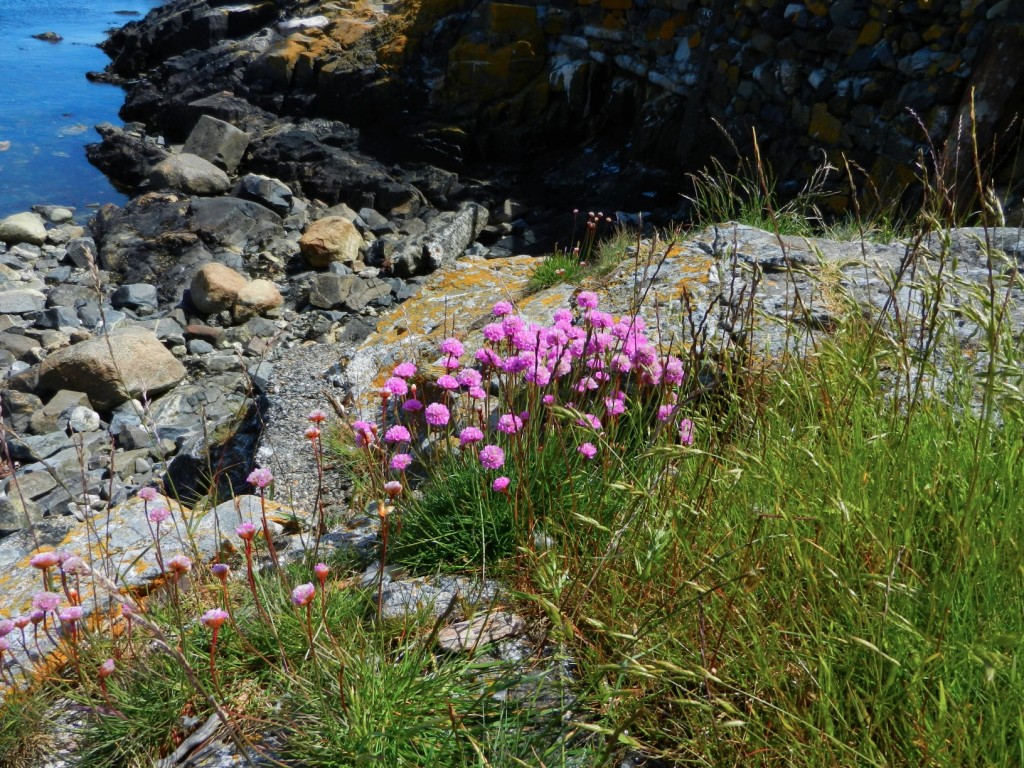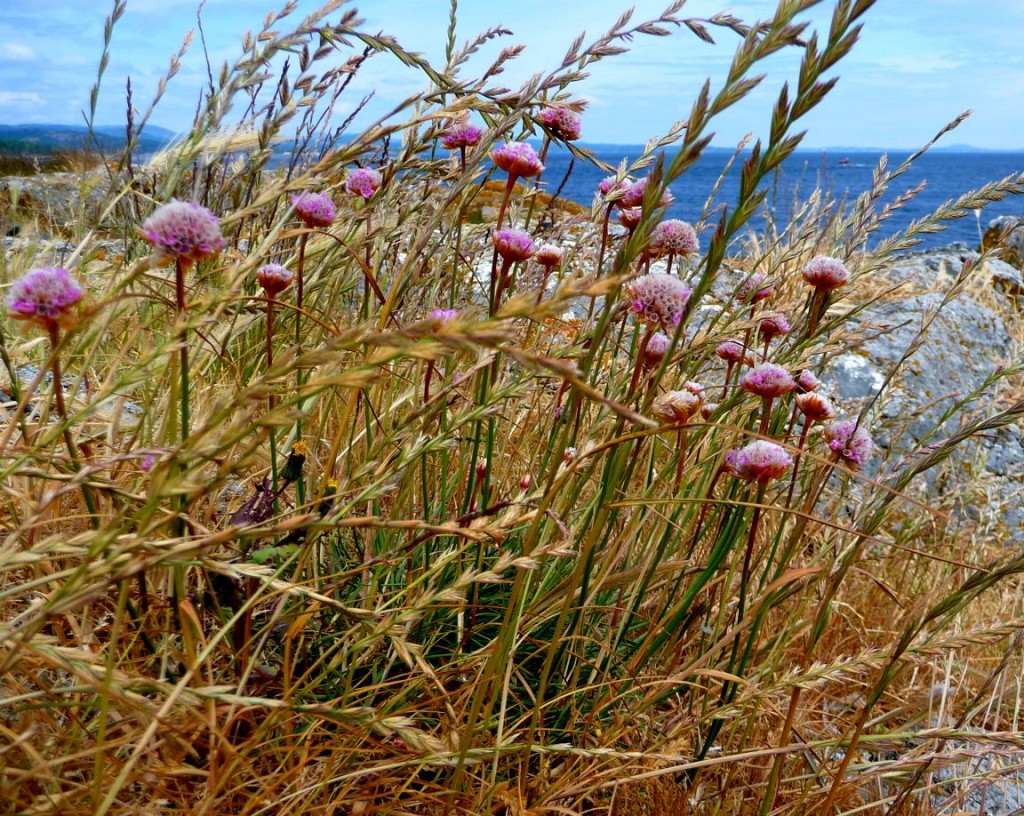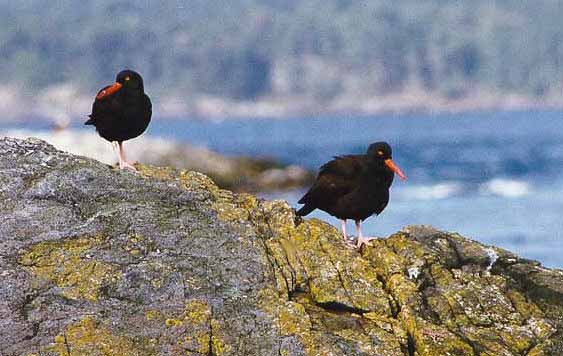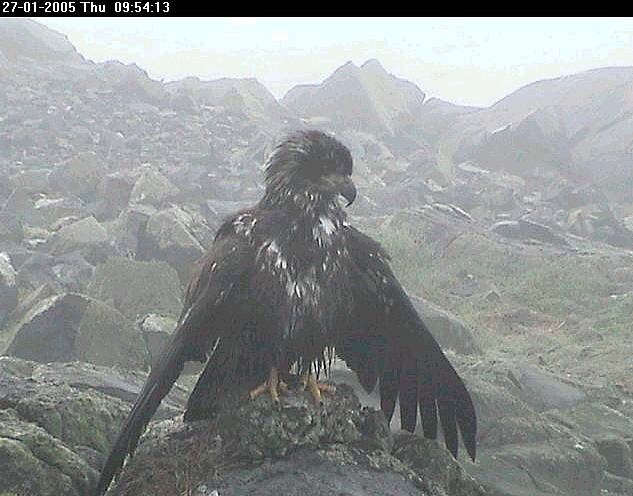Two elephant seals haul out on the lawn and provide evidence of mating behaviour. The female has a large cut around her neck indicating an old injury. (Scarlet)
On January 22, 2004 Mike and Carol Slater moved camera 3 over to their house in order to keep track of the male elephant seal, Mirounga angustirostris who has been hauled out on Great Race Rocks recently. They took these images right outside their house. He is the same one (Slash) who was injured a year ago.. See the video footage from January 03, and from August 03
This was the first time an adult female had come up to join him on the lawn. That afternoon there was considerable maneuvering for reproductive purposes.
It turns out that the female has also had an extensive injury. This deep cut, now healing over has probably been caused by a fish net or rope. We have not observed this female before at Race Rocks. She may have been hauled up on the Middle island where they lie on the flat top part and are not very visible from a boat. ( Later, Pam Birley gave this female the name of Scarlet
In 2009, we believe this same female elephant seal has again shown up on Middle Island

